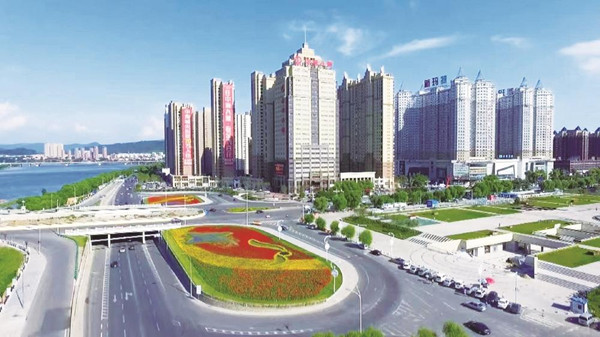
A riverside view of Fengman district shows some of the progress which is being made. [Photo/Jilin Daily]
Fengman district of Jilin city – located in Northeast China's Jilin province – has been making great strides in promoting its high-quality development, according to a report in the Jilin Daily.
Project construction is currently progressing steadily and so far, the district has started or resumed construction on 22 major projects.
Furthermore, plans are for it to promote the construction of six cultural and tourism projects, including the major westward expansion of the Vanke Resort's ski complex, to cost 2.3 billion yuan ($340 million). Three of the projects will be put into operation during the current year, with the remainder to be completed in 2025.
Fengman district is focused on building a cluster of emerging industries. It has drafted and implemented policies to support the development of emerging companies, among others – encouraging the development and growth of existing science and technology industries, modern service industries and modern industries.
Emerging industries – including information technology, digital creativity, software research and development and intelligent manufacturing – have been introduced and promoted in the district, as well as enterprises that are recognized as "professional, elaborate, distinctive and modern".
The district has promoted the implementation of 10 projects, including the Changjitu Intelligent Equipment Industrial Park and the Zhongyou Digital Ecological Industrial Park. This has created a dynamic area for the development of emerging industries.
Moreover, to train and recruit high-level sci-tech innovation talent, the district is actively supporting local enterprises to reach out to Beihua University, Jilin Medical University and the Jilin Institute of Chemical Technology.
In addition, the district has improved its environment greatly, implemented a forest chief system and kept the forest coverage rate above 58.9 percent – greatly improving the carbon sink capacity of its ecosystem.







